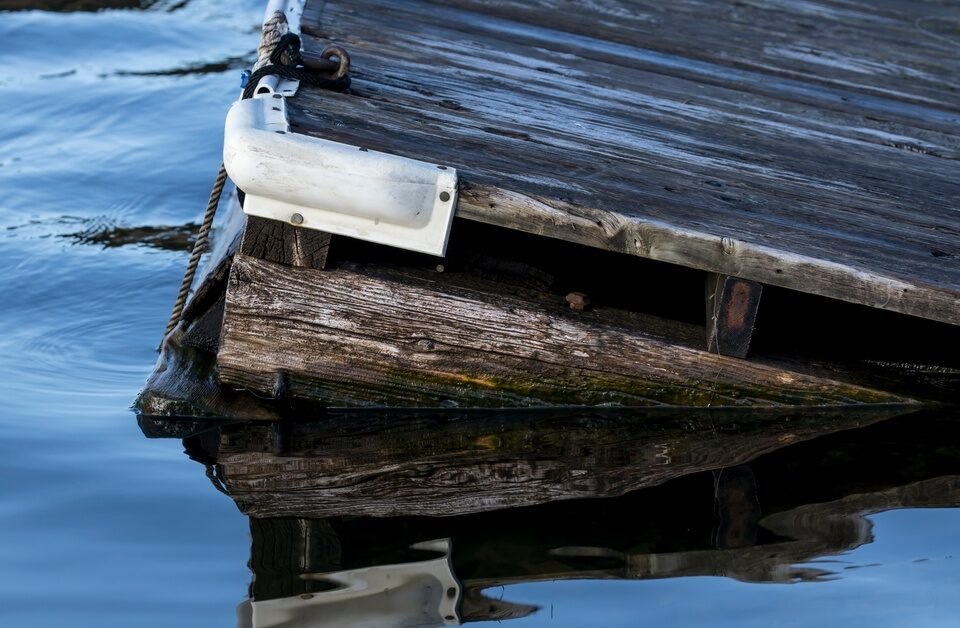A Complete Guide to Boat Dock Maintenance
Owning a dock is your gateway to endless adventures, but keeping it in top shape shouldn’t feel like sailing into uncharted waters. Whether you’re a seasoned sea lover or a first-time dock owner, proper maintenance is the secret to safe, long-lasting fun on the water. The best part? Dock upkeep doesn’t have to be a hassle.
With a little effort and a few smart tips, you can keep your dock looking great and functioning perfectly for years to come. In this guide, we’ll break down boat dock maintenance so you can spend less time worrying and more time enjoying your waterfront escape!
Spring Prep
Inspect Your Dock
Every maintenance job starts with an inspection. Walk the length of your dock, and examine it for any signs of structural damage. That means loose boards, rusted screws, or cracks that may have developed over the winter. While you’re at it, assess the pilings for wear or shifting, and check all connections to ensure they’re secure.

Clean Thoroughly
Over time, dirt, algae, and debris will accumulate on your dock, making it slippery and unsightly. A deep clean should be in order before spring rolls around and everything starts to bloom.
Use a pressure washer for a quick and effective clean, or opt for a dock-specific cleaning solution if needed. Pay special attention to areas prone to algae buildup, as accumulated growth can lead to wood degradation or unsafe surfaces.
Reapply Protective Coatings
Wood docks benefit greatly from resealing with a water-resistant sealant, as this helps protect the wood from moisture, UV damage, and mildew. For metal docks, inspect for areas where paint or coatings may have chipped or worn off over winter, such as friction spots where a vessel may have rubbed and moved with the tide. When you catch them, repaint or recoat these sections to prevent rust and extend the dock’s lifespan.
Test for Stability
Finishing off your spring prep, take another walk around the dock with care, applying weight to test for stability. Test for any weak spots, soft wood, or sections that feel uneven. These could indicate damage or wear that needs immediate attention. Take the time to reinforce loose or unstable areas, and replace damaged sections to ensure your dock remains safe for everyone who uses it.
Summer Upkeep
Inspect the Dock Every Few Weeks
Summer can be the most active season, so be sure to set aside time every few weeks to examine the dock for any damage caused by boat traffic, weather, or general wear and tear. Look for cracks in the wood, warped planks, or signs of rot that may have developed. This a good time to recheck the surrounding waterline for debris or damage to pilings and to confirm that all sections of the dock remain properly aligned and secure.
Monitor Hardware
With increased activity during summer, the hardware on your dock can loosen more quickly than usual. Periodically check and tighten screws, bolts, and brackets to keep everything secure. Properly tightened hardware prevents sections of the dock from shifting or becoming unstable, ensuring a reliable dock structure for the season’s activities.
Dock Accessories
Don’t forget to inspect the accessories that make your dock both functional and enjoyable. Examine ladders, cleats, bumpers, and fenders to ensure they’re free from rust, cracks, or other damage. Replace any worn-out components immediately to maintain both safety and convenience.
Fall Maintenance
Prepare for Cold Weather
As temperatures begin to drop, it’s vital to prepare your dock for the harsher conditions winter brings. Start by removing or securely mooring any floating dock sections. Floating docks can be vulnerable to damage from storms, ice, and shifting debris, so ensuring they are properly anchored or taken out of the water can save you significant trouble down the road. If you live in an area prone to freezing, taking proactive steps now will prevent costly repairs come springtime.
Store Equipment
Fall is the perfect time to remove and safely store all dock accessories, such as furniture, lighting, and ladders. Frost and debris from seasonal storms can cause unnecessary wear and tear on these items if left exposed, shortening their lifespan. By cleaning and storing these pieces in a dry, protected space, you’re not only prolonging their usability but also ensuring they’re in excellent condition when warmer weather returns.
Inspect Anchors and Cables
Fall often brings strong winds and unpredictable weather, which can put significant strain on a dock’s anchor systems. Carefully inspect all cables and anchors for signs of wear or loosening. Tighten any components that appear slack, and replace worn-out parts to keep everything secure and functional. A thorough check now will prevent issues down the line, keeping your dock stable and ready to withstand the elements.
Winterization Tips

Protect Fixed Docks
To prepare fixed docks for winter’s challenges, start by thoroughly inspecting the pilings for signs of damage, such as cracks, rot, or structural weaknesses. Pilings are the backbone of a fixed dock, so guaranteeing they’re in good condition is essential for stability during harsh weather. If you live in a region prone to freezing temperatures, consider adding protective sleeves to the pilings. These sleeves prevent ice from causing abrasion or cracking the wood and can significantly extend the lifespan of your dock. Taking proactive steps now will save you time, money, and stress later in the season.
Clear Debris
Winter storms often come with high winds and rough waters, which can push debris through the water with considerable force. Logs, rocks, branches, or other obstacles can collide with your dock, causing costly damage. To prevent this, take some time to clear debris from around your dock before winter sets in. Walk the shoreline to remove visible hazards, and if possible, scan the area underwater as well using tools like a rake or long pole. Keeping the vicinity clear ensures your dock remains safe during turbulent weather, protecting it from unnecessary strain and impacts.
Taking care of your dock isn’t just about upkeep—it’s about preserving the gateway to your waterfront adventures. With this easy maintenance guide, you can keep your dock safe, strong, and ready for endless days of fun by the water.
Roll-In-Docks is here to help you protect your waterfront lifestyle and make ownership even easier. With our equipment and dock wheel kits for easy storage and assembly, you can enjoy your dock without the stress of maintenance. So, don’t wait any longer to get started on maintaining your dock!




